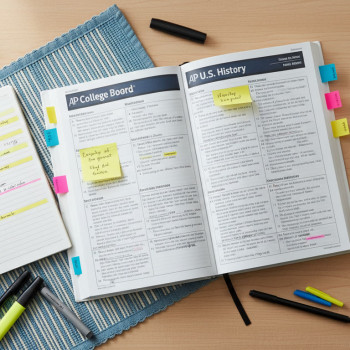Why This Guide Matters: Japan, Center Access, and Your AP Japanese Strategy
If you or your student are preparing for AP Japanese Language and Culture, you’re juggling more than conjugations and kanji. You’re navigating test-center logistics, a digital exam format, cultural fluency, and the study plan that actually gets results. This guide brings those pieces together: practical information about center access and accommodations, a clear breakdown of the exam, and an effective, human-centered study strategy that students and parents can follow together.

Understanding Center Access: Where and How You Take the AP Japanese Exam
One of the first questions families ask is where their student will actually take the AP exam. AP Japanese is administered digitally on school-owned or school-controlled devices using a secure exam app. That means most students will sit the test at their high school or at an approved testing center. For students studying outside the U.S., there are international AP centers that run the same administration.
Key logistics to confirm early
- Confirm with your school’s AP coordinator whether your school will host the exam and whether it provides the necessary devices and headsets.
- If your school does not administer AP exams, find the nearest approved AP testing center and note registration deadlines and fees.
- Check the scheduled exam date and reporting time. AP Japanese often has a specific scheduled window (local time) in May—plan travel and school commitments around it.
- If you’re an international student or your family travels, coordinate early with the AP coordinator at your host testing center to secure a seat and ensure your profile is correctly registered in My AP.
Digital exam specifics that affect center access
The exam runs on a special application where you’ll read prompts on-screen, listen through a headset, type with a Japanese IME, and speak into a microphone for oral tasks. Because of the technology needs, centers must provide functioning computers, headsets, and microphones, and often a quiet room for recording spoken responses. That infrastructure requirement is why it’s so important to confirm the center’s readiness well before test day.
Accommodations and Accessibility: What Families Need to Know
Students who receive accommodations at school (IEP, 504, or regular testing supports) are generally eligible for the same supports on AP exams. The College Board’s Services for Students with Disabilities (SSD) manages these requests, and most coordinators submit them through the SSD portal.
Practical steps to secure accommodations
- Talk to the school’s SSD coordinator as early as possible. Deadlines exist for submission and approval, and last-minute requests can complicate testing plans.
- Gather documentation that explains the student’s needs — this might be an IEP, 504 plan, or professional evaluation. The College Board typically mirrors the supports students already receive locally.
- Confirm that the testing center can provide any specialized equipment (e.g., a specific headset, assistive software) on the exam platform.
- Make sure approvals are finalized and printed or accessible in your student’s My AP account before the exam day; unapproved on-the-spot accommodations may lead to canceled scores.
Common accommodations for AP Japanese
- Extended time and extra breaks for longer processing time.
- Permission to use assistive technology, screen magnification, or a scribe for in-person responses (where appropriate).
- Large-print materials or a human reader for directions, if needed and pre-approved.
Exam Format & What to Expect on Test Day
Knowing the structure of the AP Japanese exam removes a lot of anxiety. The exam evaluates interpretive, interpersonal, and presentational communication in Japanese—reading, listening, speaking, and writing. It’s designed to reflect real-world use of language and cultural understanding.
High-level breakdown
| Section | Skills Tested | Typical Weighting | Format Notes |
|---|---|---|---|
| Multiple Choice – Listening | Comprehension of spoken Japanese | ~25% | Short audio prompts; select best answer |
| Multiple Choice – Reading | Reading comprehension across text types | ~25% | Various passages and question styles |
| Free Response – Interpersonal Writing | Real-time written exchanges | ~10–15% | Text-chat style replies; concise responses |
| Free Response – Presentational Writing | Organized written arguments and narratives | ~15–20% | Longer written responses demonstrating structure |
| Free Response – Speaking | Interpersonal and presentational oral tasks | ~15–25% | Recorded responses via microphone |
Note: Percentages are approximate and meant to give a balanced view of emphasis across skills. Practicing each area proportionally will help you focus where it counts.
Creating a Study Strategy That Works — Not Just for Tests, But for Real Communication
AP Japanese rewards students who can use Japanese flexibly, not just parrot grammar rules. Your study plan should build all four skills steadily and integrate culture, because cultural context often unlocks meaning in listening and reading prompts.
Core principles of an effective plan
- Consistency over cramming: 30–60 minutes daily yields more than marathon weekends.
- Active, not passive practice: speak and write frequently, don’t just read or listen.
- Mixed input: rotate between news articles, manga, podcasts, and formal texts.
- Error-driven learning: track recurring mistakes and target them with mini-lessons.
Weekly practice template (sample)
- Monday — Listening focus: 20–30 minutes of varied audio (news, conversations, short dramas) + 15 minutes of vocabulary review.
- Tuesday — Speaking practice: record 2 short responses to prompts and self-evaluate; 20 minutes grammar targeted practice.
- Wednesday — Reading focus: 40 minutes of texts across genres; summarize aloud in Japanese.
- Thursday — Writing: one timed presentational task (15–20 minutes) + interpersonal chat simulations.
- Friday — Integrated practice: do one mixed mini-exam section under timed conditions.
- Weekend — Cultural deep dive and review: watch a short Japanese film clip or documentary segment, and write a short reflection in Japanese.
Active tools and routines
- Shadowing: repeat audio immediately after the speaker to fine-tune rhythm and pronunciation.
- SRS (Spaced Repetition Systems) for kanji and vocabulary, but with context sentences, not isolated lists.
- Recording and listening: become comfortable speaking into a microphone since the exam records answers.
- Timed practice in the same environment you’ll test in—use similar devices and headsets if possible.
Exam-Specific Tactics: How to Translate Practice into Scores
Strategies adapted to the AP Japanese format will raise confidence and performance on test day. These tactics focus on efficiency and demonstrating communicative competency under time pressure.
Listening
- First, get the gist: don’t chase every word. Note the main idea, speaker attitude, and any contrast markers.
- Use culturally loaded cues (honorifics, keigo, formality) to infer relationships and setting.
Reading
- Skim for structure and topic sentences first; then read more closely for detail.
- For long passages, annotate quickly—underline dates, numbers, and names to anchor comprehension.
Writing
- Plan briefly: spend 1–2 minutes outlining a presentational response with an intro, two supporting points, and a conclusion.
- Use a variety of sentence structures to show range; even simple, accurate language beats complex but incorrect grammar.
Speaking
- Be clear and paced—pause to breathe and organize thoughts rather than racing to fill time.
- If you make a mistake, correct it smoothly and continue. Demonstrating recovery and repair is part of natural conversation.
Practice Resources and the Role of Personalized Tutoring
Many students benefit from structured practice materials, but the multiplier effect comes from targeted feedback. A tutor who listens to your recorded speeches, reviews your writing, and designs drills for your trouble spots accelerates progress. Sparkl’s personalized tutoring can be particularly helpful here—one-on-one guidance, tailored study plans, expert tutors who can diagnose weak spots, and AI-driven insights to track progress all fit naturally into a balanced prep plan.
How a tutor complements self-study
- Immediate, actionable feedback on pronunciation, grammar, and organization.
- Customized practice sessions that focus on the student’s specific errors rather than generic exercises.
- Motivation and accountability—regular check-ins keep momentum going when independent study drifts.
Sample 12-Week Plan: Turn Confidence into Performance
This sample assumes the student already has intermediate skills (around fourth year of study or equivalent). Adjust pacing and intensity based on your baseline.
| Weeks | Focus | Goals | Weekly Routine |
|---|---|---|---|
| 1–3 | Foundations: vocabulary and grammar | Solidify core kanji, verb forms, politeness levels | Daily SRS, short listening, targeted grammar drills, weekly tutor session |
| 4–6 | Skill building: integrated practice | Begin timed sections; practice speaking recordings | Timed listening + reading sets, 2 writing tasks, weekly recorded speaking and tutor feedback |
| 7–9 | Refinement: weaknesses and fluency | Eliminate common errors, increase output fluency | Full mixed practice sessions, focused error correction, cultural-context studies |
| 10–12 | Polish: mock exams and simulation | Simulate test day; strategy fine-tuning | 2 full-length mock digital exams, review sessions, relaxation techniques for test day |
Parents’ Role: Support Without Micromanaging
Parents can make a huge difference by creating a supportive environment: helping manage logistics (test-center registration, SSD paperwork, and schedules), providing quiet study space, and encouraging consistency. Resist the urge to fix everything—students need ownership of their study and mistakes. Instead, offer structure and emotional support: celebrate steady improvements, not only final scores.
How to coach effectively
- Ask about short-term goals and progress rather than daily hours. “What did you focus on this week?” is a more useful question than “How many hours did you study?”
- Help arrange practice that mirrors the exam environment once the test date approaches—same type of device, similar headset, timed conditions.
- When stress rises, encourage short breaks, sleep, and light physical activity; cognitive performance depends on rest.
Test Day and Beyond: What Success Looks Like
On test day, practicalities matter—bring required materials, confirm your center and reporting time, get a good night’s sleep, and eat a balanced breakfast. Confidence often comes from preparation and familiarity; a final mock exam in the days leading up will make the exam feel like another practice rather than a one-time performance.
After the exam
- Reflect: have the student note what felt strong and what didn’t—this helps plan follow-up learning, whether for college placement or personal goals.
- Use scores strategically: many colleges offer credit or placement for high AP scores. Schools and students should check policies on credit and placement before relying on AP results for degree planning.
- Keep learning: language ability is a long-term asset—continue reading, speaking, and using Japanese in real contexts.
Parting Thoughts: A Balanced, Confident Path to AP Japanese
Preparing for AP Japanese is about more than acing an exam; it’s about building a practical, usable command of language and culture. Start with logistics—confirm your test center and any accommodations—then build daily habits that balance listening, speaking, reading, and writing. Use targeted practice, record and evaluate spoken responses, and consider personalized tutoring for focused feedback and accountability. Services like Sparkl’s personalized tutoring can fit naturally into this journey by providing one-on-one guidance, tailored study plans, expert tutors, and AI-enhanced progress tracking—especially helpful when time is tight and improvement needs to be efficient.
Ultimately, success in AP Japanese comes from steady, purposeful practice and a supportive environment—students who practice deliberately and get targeted feedback tend to enter the exam calm, prepared, and ready to show what they can do. Ganbatte (do your best)—and remember, language learning is a marathon, not a sprint. The skills you gain will pay dividends in college and beyond.





















No Comments
Leave a comment Cancel